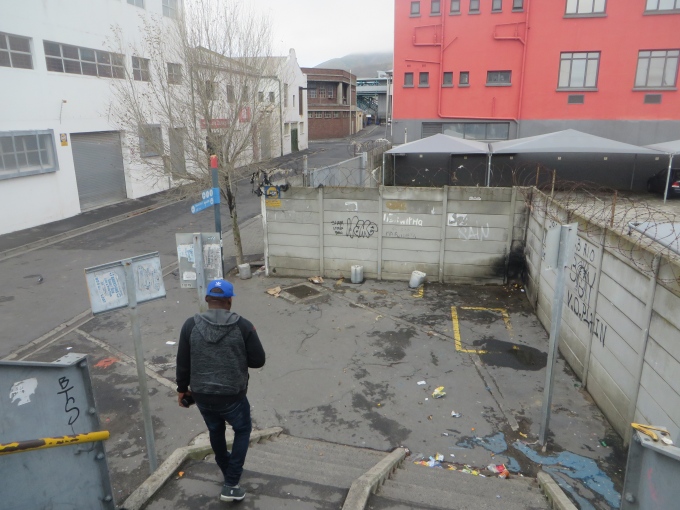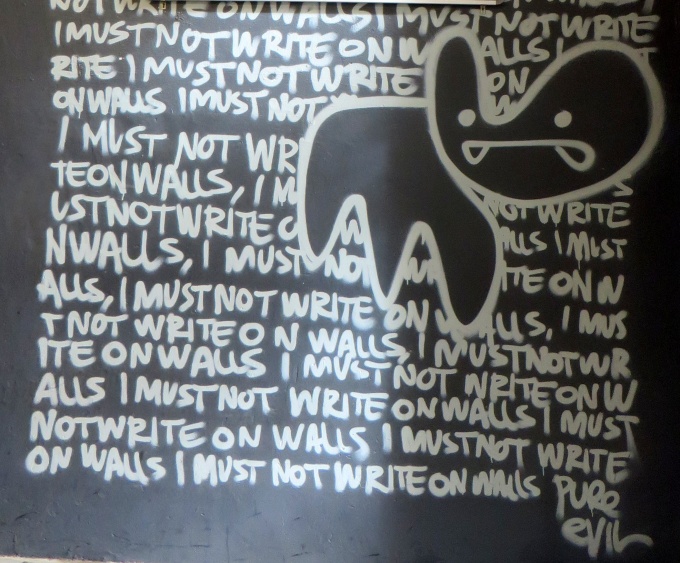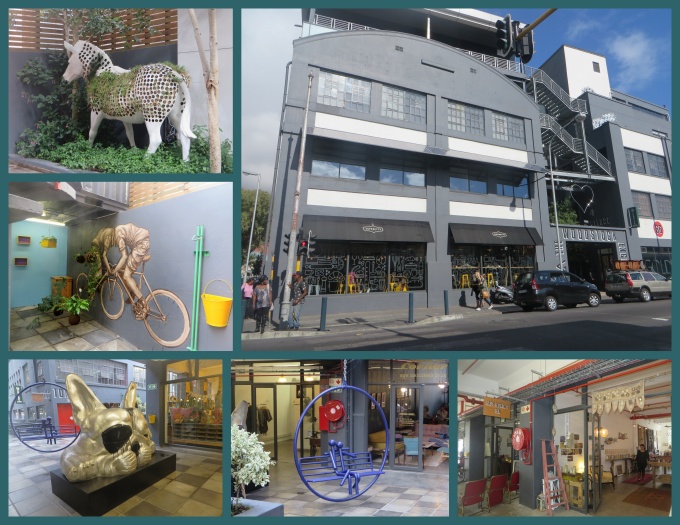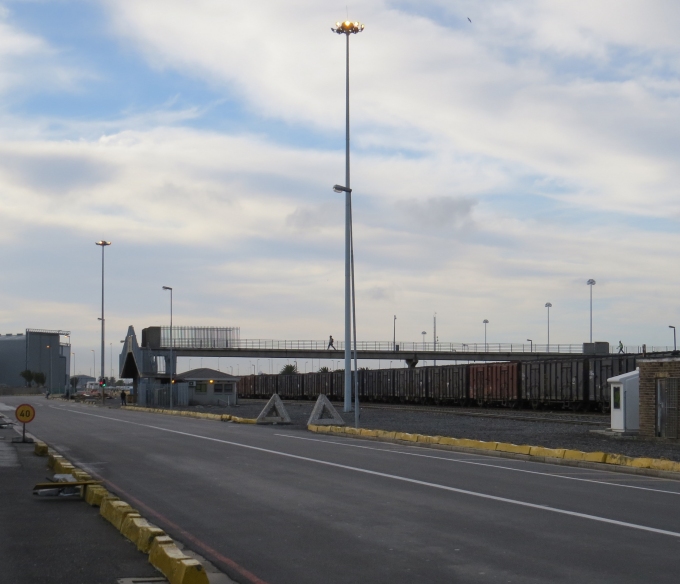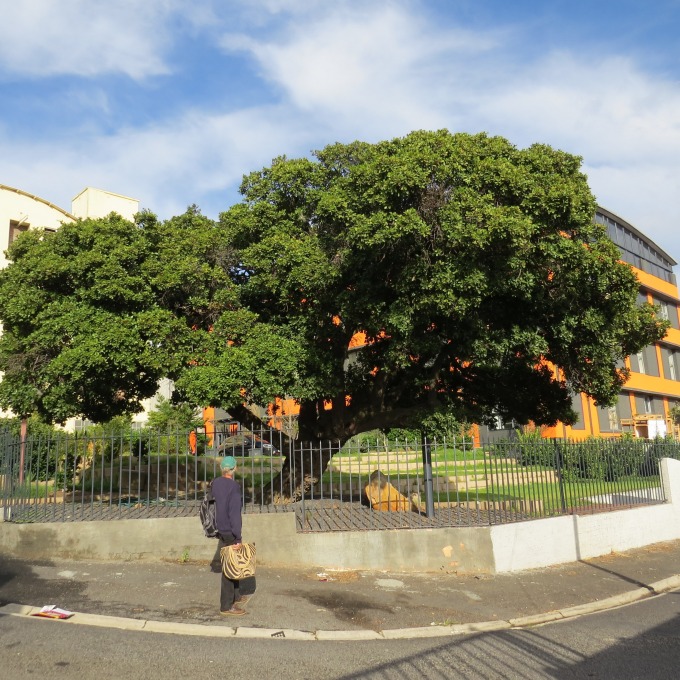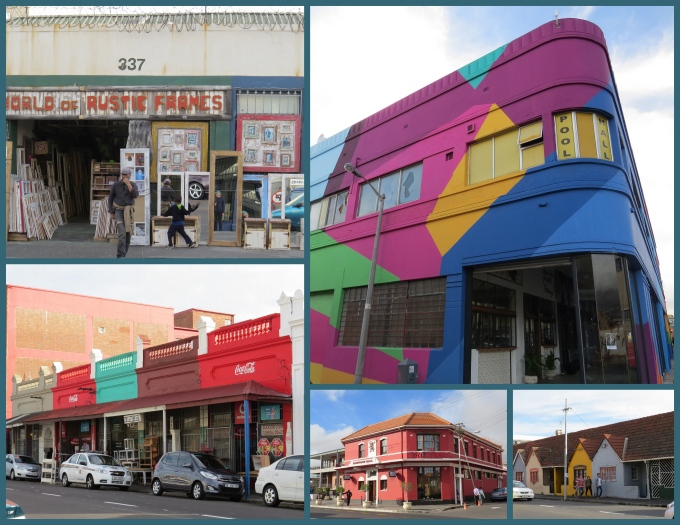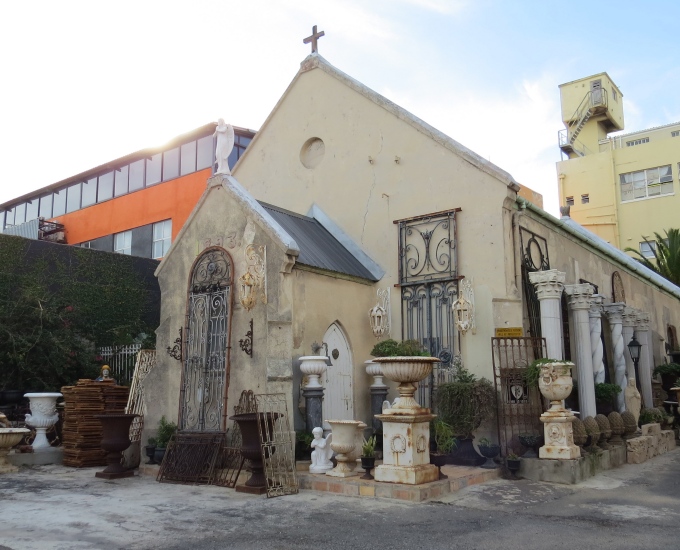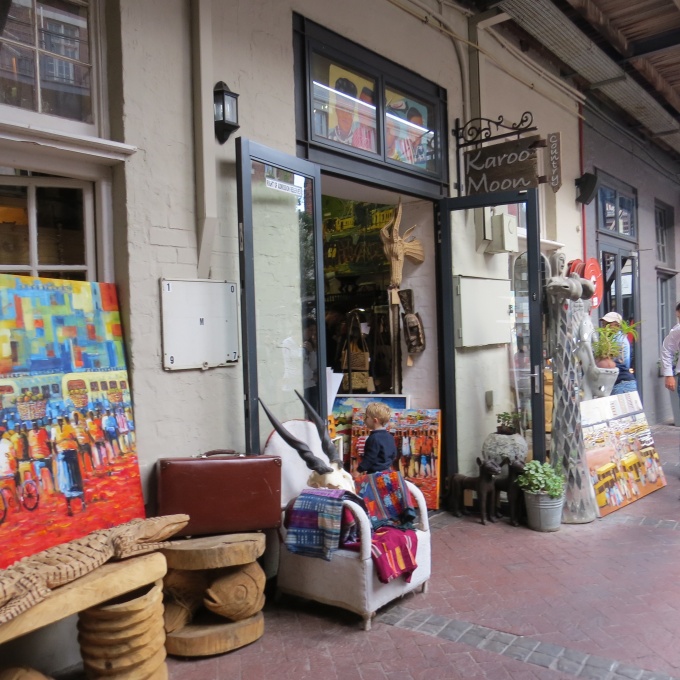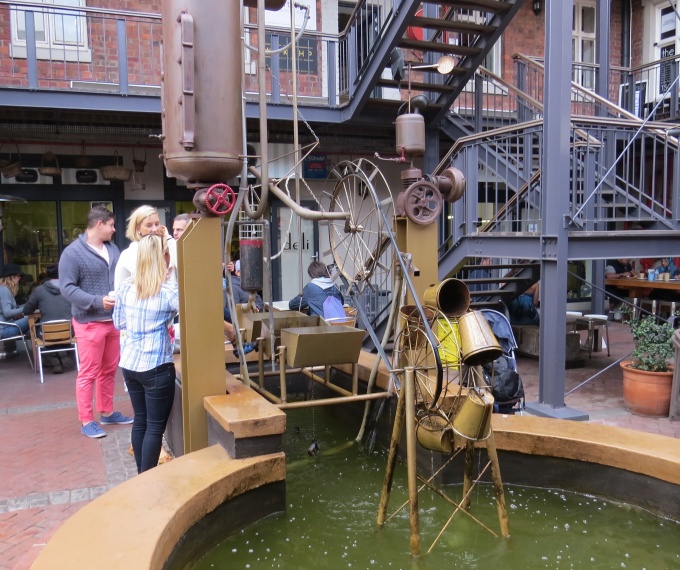Woodstock - Tags, Graffiti & Street Art pt. 1
/“Graffiti (plural of graffito … really?) are writing or drawings that have been scribbled, scratched, or painted illicitly on a wall or other surface, often in a public place.” It derives from the Italian sgraffio (to scratch) and/or from the Greek graphein (‘to write’) and it's been around since the beginning of civilization … think about the cavemen and their cave walls.

After our last visit to Woodstock and a little on-line research, I was left with wondering about the subtle differences between graffiti, tagging and actual street art. When I saw the elaborately painted murals and paintings on buildings in Woodstock, I knew I was looking at art. I felt the difference, but I was trying to verbalize it. So what's the difference? The general consensus is that it's about the “artist's” intent.
Tagging is merely leaving your name or “tag” symbol on any public surface. It's usually not particularly skillful and mostly completed in one or two colors with spray paint or big thick markers. Though we've seen some artful tagging, it usually falls into the defacement or vandalism category. “BTS” seems to be the most active tagger in Woodstock. His (her?) tags are everywhere … unfortunately.
A few years ago, our nephew, Nick, got caught tagging and paid a very hefty fine for it plus had to do community service. I asked him his views on tagging. He said “It's not about the surface cover. It's about the location … leaving your mark ... like gangs use tags to say this is their area n maybe u cover up some one elses tag or u can use to advertise yourself. Sometimes i do it compulsively like if i have a writing implement i just scribble something out. Graffiti and street art usually have a message but tagging is a personal kinda conceited thing.”
The intent of tagging according to Nick, and I agree, seems to be self-aggrandisement … “I was here! Aren't I something!” … no sharing, no beautification, no message. All that said, Nick has some real talent that we all enjoy … just not on public buildings. His artwork would fit right in on some of Woodstock's buildings though.
Back to Woodstock. Though it has its fair share of tagging and random graffiti, it is street art and urban murals that captured our attention last time and drew us back for a closer look. The intent of the art, according to Freddy Sam, local resident, self-taught artist, and one of the prime movers of Woodstock's street art movement, is the beautification of the area and pride in the neighborhood.
This is urban communication at its best and it's a collaborative effort. The talented artists are from around the world. Their messages, whether whimsical or socio-political statements, are clear. Their work appears on buildings and walls and public places with the permission of the owners. It's an open air gallery … and it's wonderful. In the words of Freddy Sam, “Removing the greyness from the soul of the city is the job of musicians, artists and poets.”
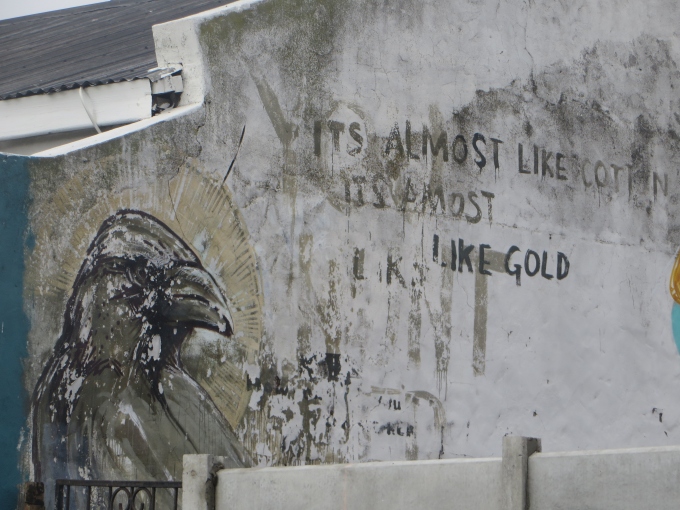 I did my homework on the internet before we left. Though there's a plethora of blog posts and articles dedicated to Woodstock's street art, none really give directions to specific locations. There are tours available, but we prefer to wander on our own. After reviewing several photos which showed street signs, I was able to narrow down our search to a walkable grid. We meandered through a labyrinth of decaying, crumbling buildings and dicey streets between Albert and Victoria Roads.
I did my homework on the internet before we left. Though there's a plethora of blog posts and articles dedicated to Woodstock's street art, none really give directions to specific locations. There are tours available, but we prefer to wander on our own. After reviewing several photos which showed street signs, I was able to narrow down our search to a walkable grid. We meandered through a labyrinth of decaying, crumbling buildings and dicey streets between Albert and Victoria Roads.
We traipsed up one parlous street and down another from Barron Street east towards Essex. Locals tell us this isn't a safe area to be walking, but we had no problems and never felt threatened. It's definitely dodgy and has a bad reputation and we probably wouldn't do it at night. But it was a sunny, gorgeous day and we greeted people with a smile and a good morning and received the same in kind. Some teenagers were playing football at the crossroad of two narrow streets, while others shot dice on a corner. They shouted “Take our picture.” We waved and I took a photo.
We stopped at Side Street Studios and peered in through the gate. An attendant from the adjacent shop waved us in and let us pass through to the inner courtyard area. Local artists like DALeast who live and work in this studio have taken free rein of all available wall space and used it to good advantage.
We stopped in the renovated, upscale Woodstock Exchange, an old warehouse building akin to the Old Biscuit Mill. It's a warren of tiny cafes and unique shops offering everything from gourmet lunches, coffees and teas to small galleries and skateboard sales and repairs … kind of a hipster heaven and a magnet for yuppies. Artwork is a distinctive part of the décor, but the place seems incongruous to the neighborhood surrounding it.
We revived ourselves with a coffee at the kitchy little Starling & Hero Bicycle Cafe which had lots of bicycles on display along with other funky bric-a-brac that kept us occupied while we waited for our coffees. I picked up several flyers for events going on at local Cape Town galleries in the upcoming weeks. If we're here much longer, maybe we'll be able to check some of them out. Actually, if we're here much longer, we might have a chance to paint a mural or two ourselves.
Come back tomorrow to explore more of Woodstock's outstanding street art with us. We're saving the best till last.


